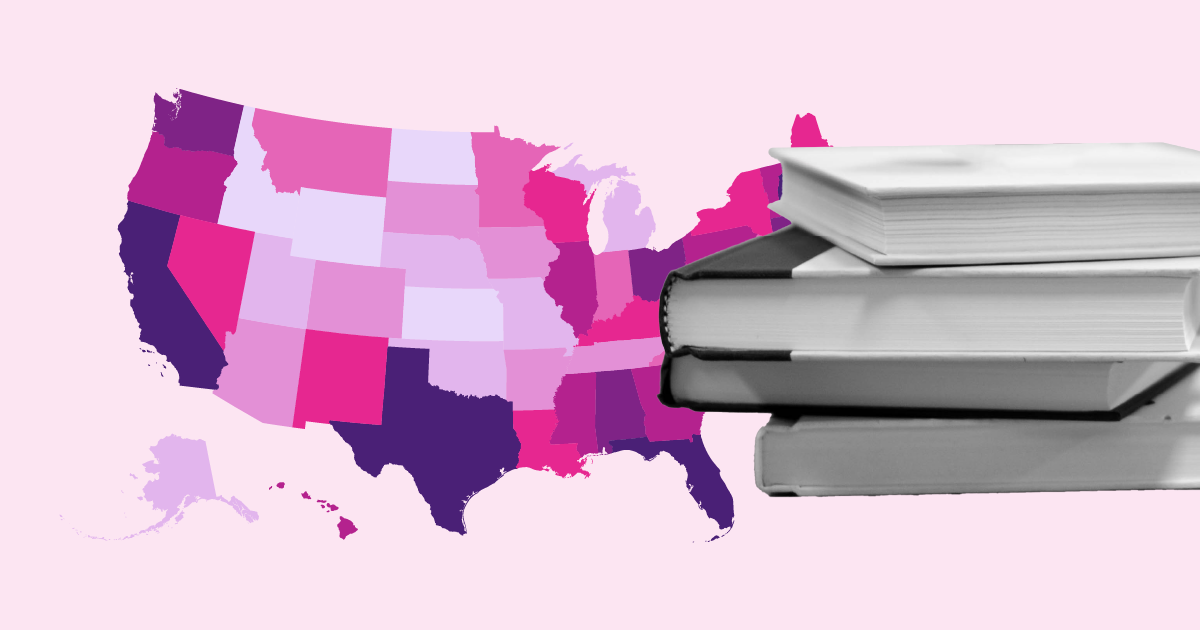Education
Which states have the highest and lowest adult literacy rates?

Members of Gen Z, the generation born between 1997 and 2012, are between 12 and 27 years old this year: The youngest are now in sixth grade, and the oldest would have graduated from a four-year college five years ago. Across the board, their educational experience has been shaped by the COVID-19 pandemic and the integration of remote learning.
What has this changing educational landscape meant? How educated is Gen Z, and how did the pandemic impact education?
In 2022, the oldest of Gen Z would have turned 25, and would have been two or three years removed from a four-year college, if they began college right after high school. In reality, 53% of people ages 18–24 had at least some higher education, including 13.4% who earned a bachelor’s degree and 39.6% who earned an associate’s degree or had completed some college courses. Of the remaining 47%, 35.4% graduated from high school (or earned a high-school equivalent) and stopped there, and 11.6% had less than that.
You are signed up for the facts!
College enrollment trends have changed for both four-year and two-year institutions compared to previous generations.
The first Gen Zers turned 18 in 2015. Since then, the enrollment rate for four-year colleges among 18–24-year-olds has since increased 0.6 percentage points, from 29.9% in 2015 to 30.5% in 2022.
It peaked at 31.1% in 2016, the highest point since data collection began in 1973, when that year’s enrollment would have included both the oldest Gen Zers and the youngest millennials (who were born in 1996).
At two-year colleges, enrollment has dropped 2.1 percentage points, from 10.6% in 2015 to 8.5% in 2022. It peaked at 12.9% in 2010 and was at 10.6% when Gen Z was old enough to enroll.
School enrollment is down for all Gen Z ages, comparing 2019 and 2022 enrollment rates.
Enrollment rates for 7 to 17-year-olds dropped between 0.1 and 0.3 percentage points, and enrollment rates for students ages 18 to 29[1] fell between 0.3 and 3.4 percentage points. In other words, K-12 enrollment stayed stable while enrollment for college-aged students dropped more significantly.
The largest change was among 18 and 19-year-olds — high school seniors and college freshmen. Their enrollment dropped 3.4 percentage points, the most of any age group. The second biggest drop in enrollment was among 20 to 24-year-olds, at 1.7 percentage points.
The most stable age groups were 25-29 and 7-13 years old — the oldest and youngest students — whose enrollment decreased only 0.3 percentage points. (The 7-13-year-old range includes the oldest of Generation Alpha, born between 2010 and 2024, and the youngest of Gen Z.)
Gen Z bore the brunt of the pandemic’s impact on education beginning in 2020, when they were between ages 8-23. According to the National Center for Education Statistics, 56% of households reported changes in college plans for someone in their household in the fall of 2021. Changes took many forms: canceling all plans to attend classes, taking fewer classes, taking more classes, attending classes for a different kind of certificate or degree, taking classes from a different institution, or switching class formats (i.e., from in-person to online).
For students who cancelled all plans to attend college-level classes, reasons included:
Between January and June 2021, a Centers for Disease Control and Prevention (CDC) study found that two- thirds of high schoolers (grades 9-12) reported difficulty completing schoolwork during the pandemic.
Separately, the Department of Education found in a study published in June 2021 that during COVID-19 lockdown measures:
Although COVID-19 trend data on education is still preliminary — the CDC ended the COVID-19 public health emergency on May 11, 2023 — early data indicates lower school enrollment among Gen Zers and a steady preference for four-year colleges. It also indicates educational disruptions related to finances, home life, social networks, and physical and mental health.
Learn more about how much money states spend on education and get the facts every week by signing up for our newsletter.
Includes ages 26-29, the youngest of millennials in 2022, due to age groups available in NCES data.